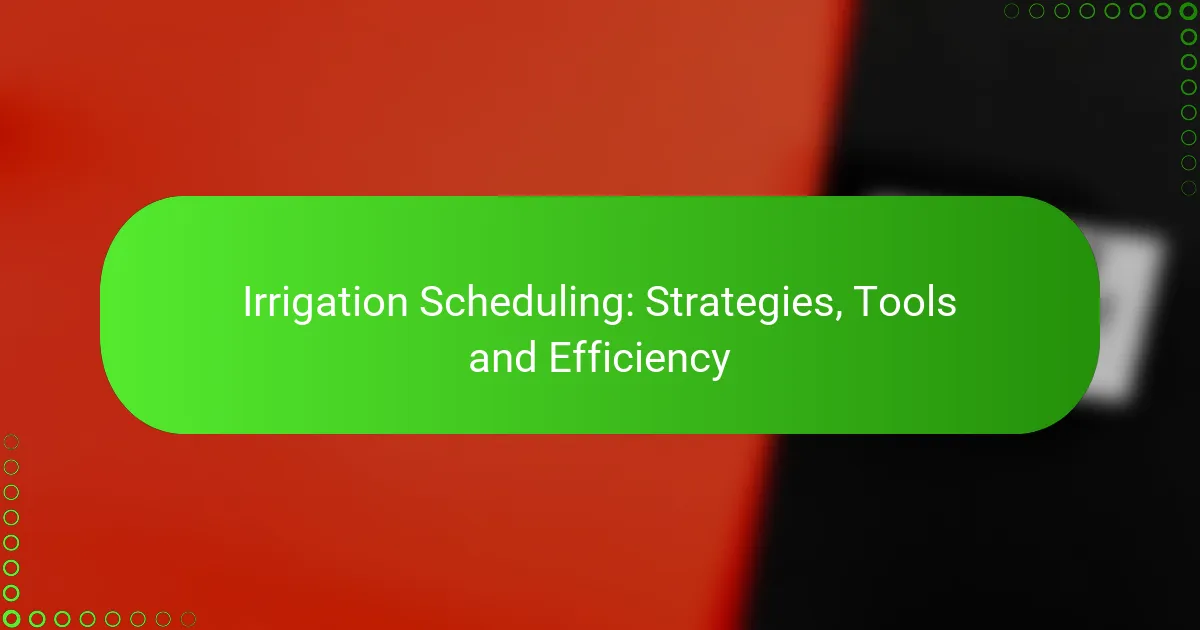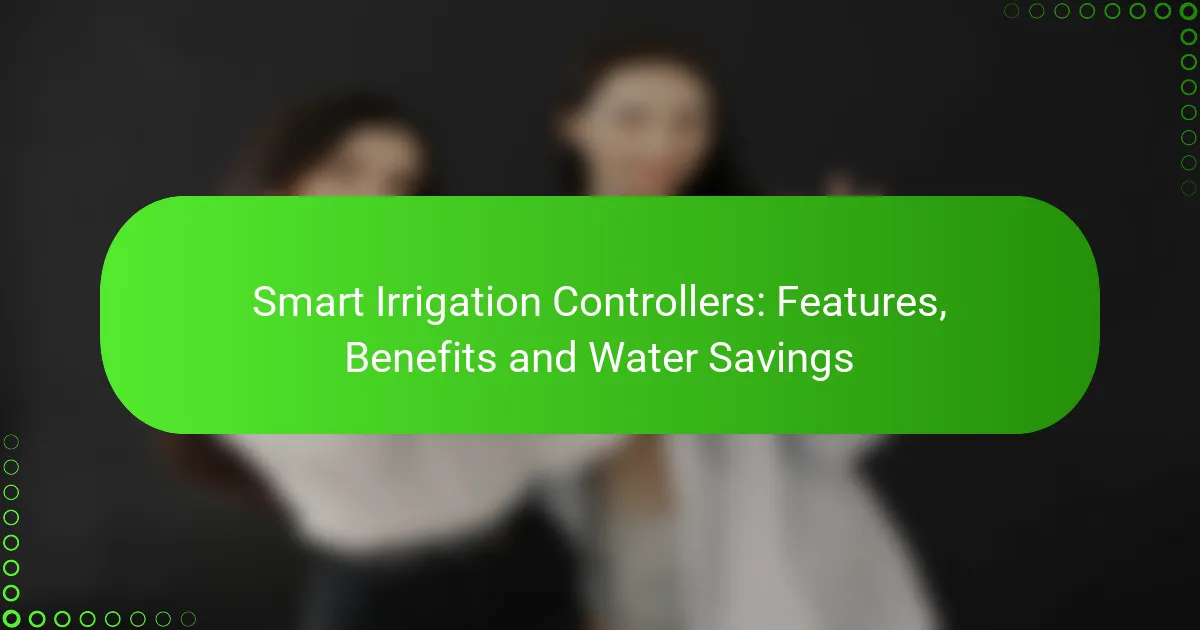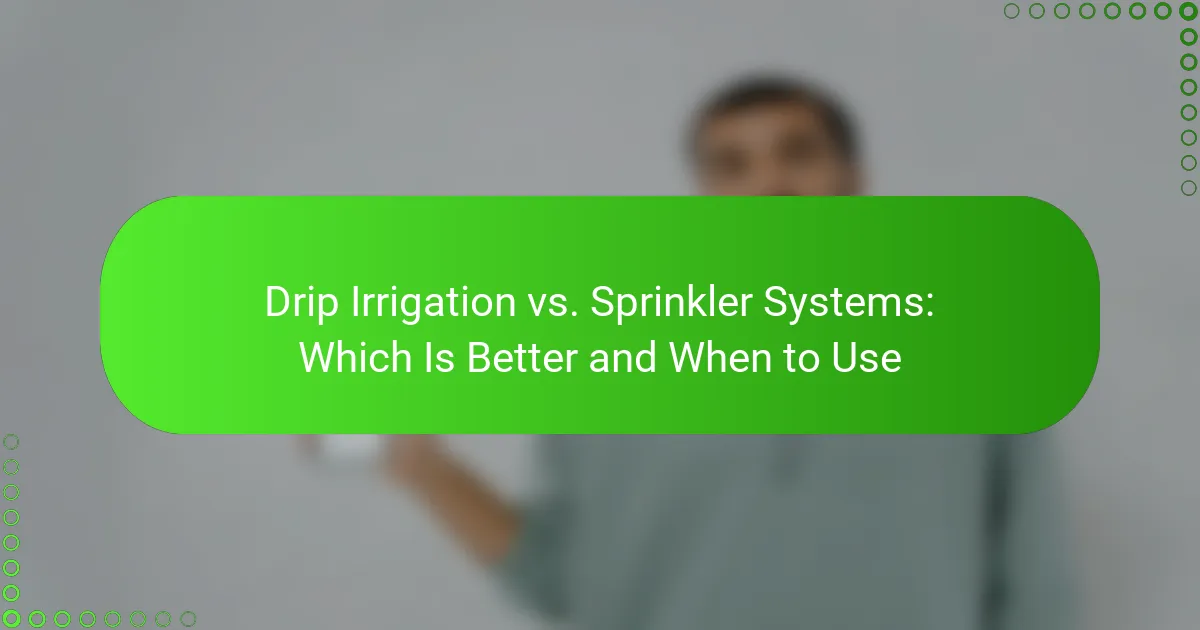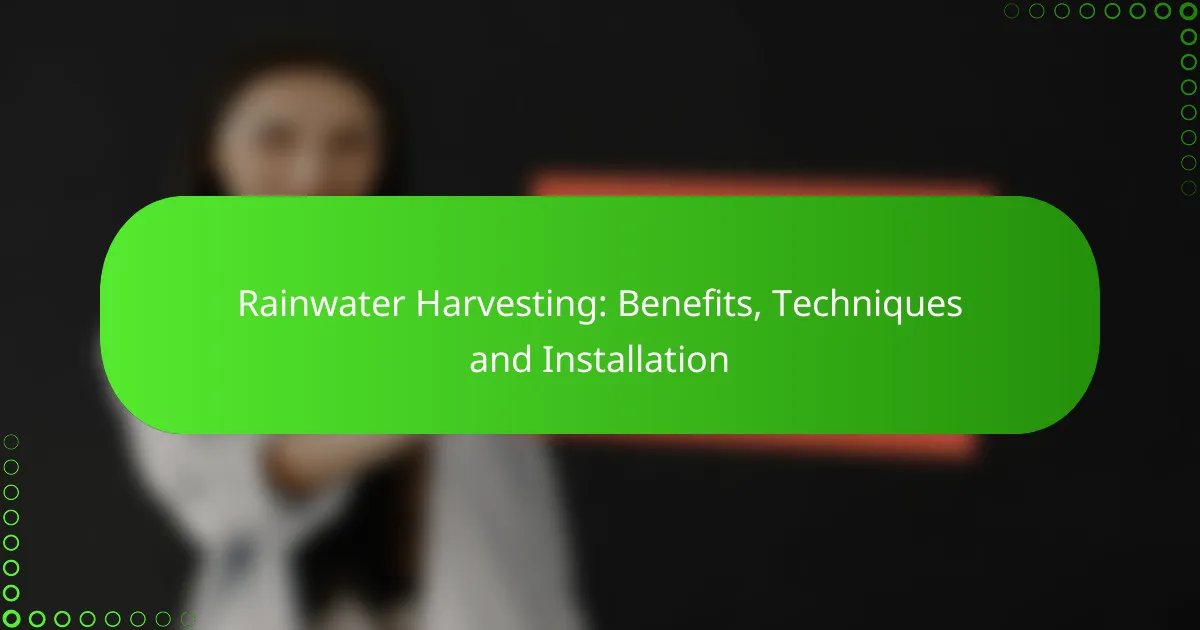Irrigation scheduling is crucial for optimizing water use and ensuring the health of crops, particularly in regions like South Africa. By employing strategies such as soil moisture monitoring and weather-based adjustments, farmers can enhance efficiency and reduce waste. Additionally, the integration of technology, including smart systems and mobile applications, allows for precise data management and automation, ultimately improving crop yields.

What are the best irrigation scheduling strategies in South Africa?
The best irrigation scheduling strategies in South Africa focus on optimizing water use while ensuring crop health. Effective methods include soil moisture monitoring, weather-based scheduling, understanding crop water requirements, and utilizing evapotranspiration methods.
Soil moisture monitoring
Soil moisture monitoring involves measuring the water content in the soil to determine when irrigation is necessary. This can be done using sensors or manual methods such as soil probes. Regular monitoring helps prevent over-irrigation and under-irrigation, which can harm crops and waste water.
In South Africa, using soil moisture sensors can provide real-time data, allowing farmers to irrigate based on actual soil conditions rather than a fixed schedule. This approach can lead to water savings of up to 30% compared to traditional methods.
Weather-based scheduling
Weather-based scheduling uses local weather data to inform irrigation decisions. This strategy considers rainfall, temperature, and humidity to adjust irrigation timing and amounts. By integrating weather forecasts, farmers can reduce unnecessary watering during rainy periods.
For instance, in regions with high evaporation rates, such as the Karoo, scheduling irrigation in the early morning or late afternoon can minimize water loss. Utilizing local weather stations or online platforms can enhance the accuracy of this approach.
Crop water requirements
Understanding crop water requirements is essential for effective irrigation scheduling. Different crops have varying water needs based on growth stages, climate, and soil type. Farmers should familiarize themselves with these requirements to optimize irrigation practices.
In South Africa, crops like maize may require around 500-700 mm of water per growing season, while others like wheat may need less. Adjusting irrigation based on specific crop needs can improve yield and conserve water resources.
Evapotranspiration methods
Evapotranspiration (ET) methods estimate the amount of water lost through evaporation and plant transpiration. By calculating ET, farmers can determine how much water their crops need and schedule irrigation accordingly. This method is particularly useful in arid regions.
In South Africa, using ET data can help farmers apply water more efficiently. Tools such as ET calculators or local ET reference data can guide irrigation practices, ensuring crops receive adequate moisture without excess. Regularly updating ET calculations based on weather changes is crucial for maintaining efficiency.
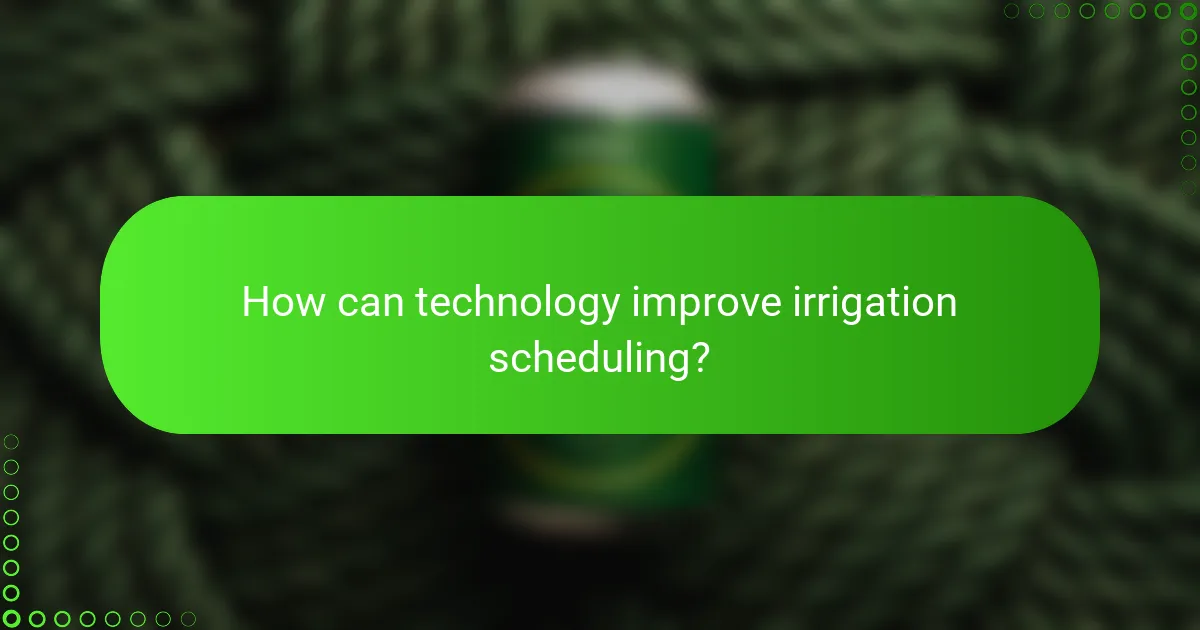
How can technology improve irrigation scheduling?
Technology enhances irrigation scheduling by providing precise data and automation, leading to more efficient water use. By integrating smart systems, mobile applications, and automated controllers, farmers can optimize their irrigation practices, reduce water waste, and improve crop yields.
Smart irrigation systems
Smart irrigation systems utilize sensors and weather data to determine the optimal watering schedule for crops. These systems can adjust watering based on real-time conditions, such as soil moisture levels and rainfall forecasts, ensuring that plants receive the right amount of water at the right time.
Investing in smart irrigation can lead to significant water savings, often reducing water usage by 20-50%. Farmers should consider systems compatible with their existing infrastructure and local climate conditions for maximum efficiency.
Mobile apps for scheduling
Mobile apps designed for irrigation scheduling allow farmers to manage their watering schedules from anywhere. These applications often include features like weather alerts, soil moisture tracking, and customizable irrigation plans, making it easier to respond to changing conditions.
When choosing a mobile app, look for user-friendly interfaces and integration capabilities with existing irrigation systems. Many apps offer free trials, enabling farmers to test functionality before committing to a purchase.
Automated irrigation controllers
Automated irrigation controllers can be programmed to water crops at specific times and durations, reducing the need for manual intervention. These devices can be set to operate based on preset schedules or adjusted according to sensor data, providing flexibility and efficiency.
Farmers should select controllers that are compatible with their irrigation systems and consider features like remote access and weather-based adjustments. Regular maintenance and updates are essential to ensure optimal performance and reliability.

What tools are available for irrigation scheduling?
Several tools are designed for effective irrigation scheduling, helping farmers and gardeners optimize water usage. These tools vary in features, from weather-based adjustments to soil moisture monitoring, enabling users to select the best fit for their specific needs.
HydroPoint WeatherTRAK
HydroPoint WeatherTRAK is a smart irrigation management system that uses real-time weather data to adjust watering schedules. It considers factors such as temperature, humidity, and rainfall to minimize water waste and ensure optimal plant health.
This tool is particularly beneficial for large landscapes or commercial properties, offering features like remote access and customizable settings. Users can expect to save a significant percentage of water compared to traditional irrigation methods.
RainMachine
RainMachine is a Wi-Fi-enabled irrigation controller that utilizes hyper-local weather forecasts to manage watering schedules. It can automatically adjust based on predicted rain, ensuring that plants receive the right amount of water without unnecessary runoff.
This device is user-friendly, allowing for easy programming via a smartphone app. It is ideal for residential gardens and small farms, with potential water savings in the range of 20-50% depending on local conditions.
CropX
CropX offers a soil moisture monitoring solution that combines sensors with data analytics to optimize irrigation. By measuring soil moisture levels, it provides actionable insights on when and how much to water, reducing over-irrigation risks.
This technology is particularly useful for row crops and orchards, where precise moisture management can lead to healthier yields. Users can expect improved water efficiency and reduced costs associated with excessive irrigation.
Netafim solutions
Netafim specializes in drip irrigation systems that can be integrated with advanced scheduling tools. Their solutions focus on delivering water directly to the plant roots, minimizing evaporation and runoff.
These systems are highly customizable, making them suitable for various crops and climates. Implementing Netafim’s technology can lead to water savings of up to 30% compared to traditional irrigation methods, making it a sustainable choice for farmers.
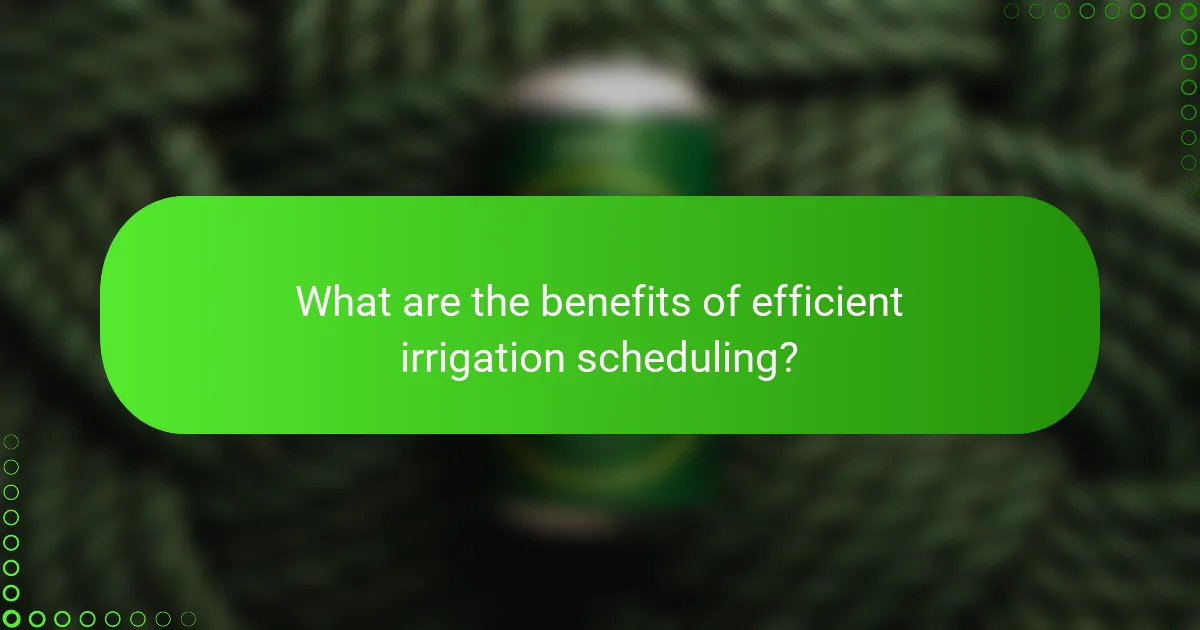
What are the benefits of efficient irrigation scheduling?
Efficient irrigation scheduling offers numerous advantages, primarily in water management, cost reduction, and enhanced agricultural productivity. By optimizing water use, farmers can conserve resources while maximizing crop health and yield.
Water conservation
Efficient irrigation scheduling significantly reduces water waste by ensuring that crops receive the right amount of water at the right time. Techniques such as drip irrigation or soil moisture sensors can help monitor and adjust water application based on real-time needs.
Farmers can save substantial amounts of water, often reducing usage by 20-50% compared to traditional methods. This conservation is particularly crucial in regions facing water scarcity or strict regulations on water use.
Cost savings
By implementing efficient irrigation scheduling, farmers can lower their water bills and reduce energy costs associated with pumping water. The initial investment in technology, such as automated systems or moisture sensors, often pays off within a few growing seasons.
Additionally, reduced water usage can lead to lower operational costs, allowing farmers to allocate resources to other critical areas of their operations. Overall, cost savings can range from a few hundred to several thousand dollars annually, depending on the scale of the farm.
Improved crop yields
Efficient irrigation scheduling directly contributes to improved crop yields by ensuring that plants receive optimal moisture levels throughout their growth cycles. This practice helps prevent stress during critical growth periods, leading to healthier plants and better harvests.
Farmers can expect yield increases of 10-30% when adopting efficient irrigation practices, particularly in water-sensitive crops. Consistent moisture management not only enhances quality but also reduces the risk of crop failure due to drought or overwatering.
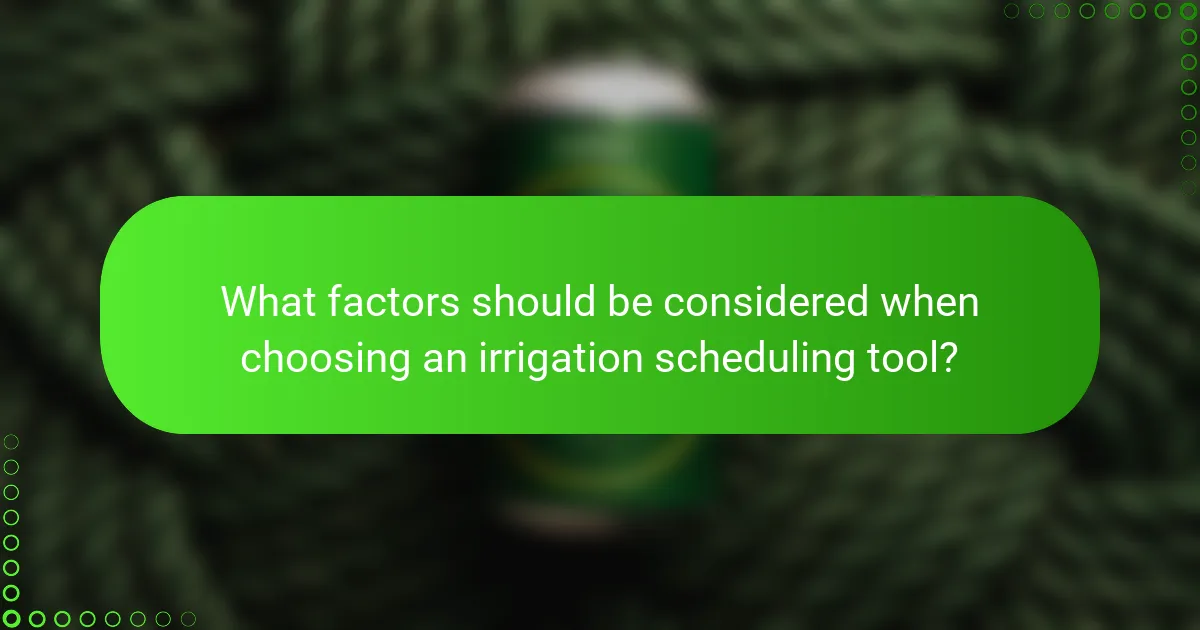
What factors should be considered when choosing an irrigation scheduling tool?
When selecting an irrigation scheduling tool, consider compatibility with existing systems, ease of use, and cost of implementation. These factors will ensure that the tool integrates well into your operations, is user-friendly, and fits within your budget.
Compatibility with existing systems
Ensure the irrigation scheduling tool can seamlessly integrate with your current irrigation infrastructure. Compatibility with sensors, controllers, and software is crucial for efficient operation. For example, if you already use a specific type of irrigation controller, look for scheduling tools that can connect with it directly.
Check if the tool supports common communication protocols and data formats used in your existing systems. This will minimize the need for additional hardware or software, reducing complexity and potential costs.
Ease of use
The user interface of the irrigation scheduling tool should be intuitive and straightforward. A tool that is easy to navigate will save time during setup and daily operations. Look for features like visual dashboards and simple data entry forms that enhance user experience.
Consider the learning curve associated with the tool. A system that requires extensive training may lead to delays in implementation. Opt for tools that offer tutorials or customer support to assist users in getting started quickly.
Cost of implementation
Evaluate the total cost of implementing the irrigation scheduling tool, including initial purchase, installation, and ongoing maintenance fees. Some tools may have low upfront costs but higher long-term expenses due to subscription fees or required upgrades.
Compare different options to find a balance between features and affordability. It may be beneficial to request quotes from multiple vendors to assess the best value for your budget. Additionally, consider potential savings in water usage and labor costs that an efficient scheduling tool can provide over time.
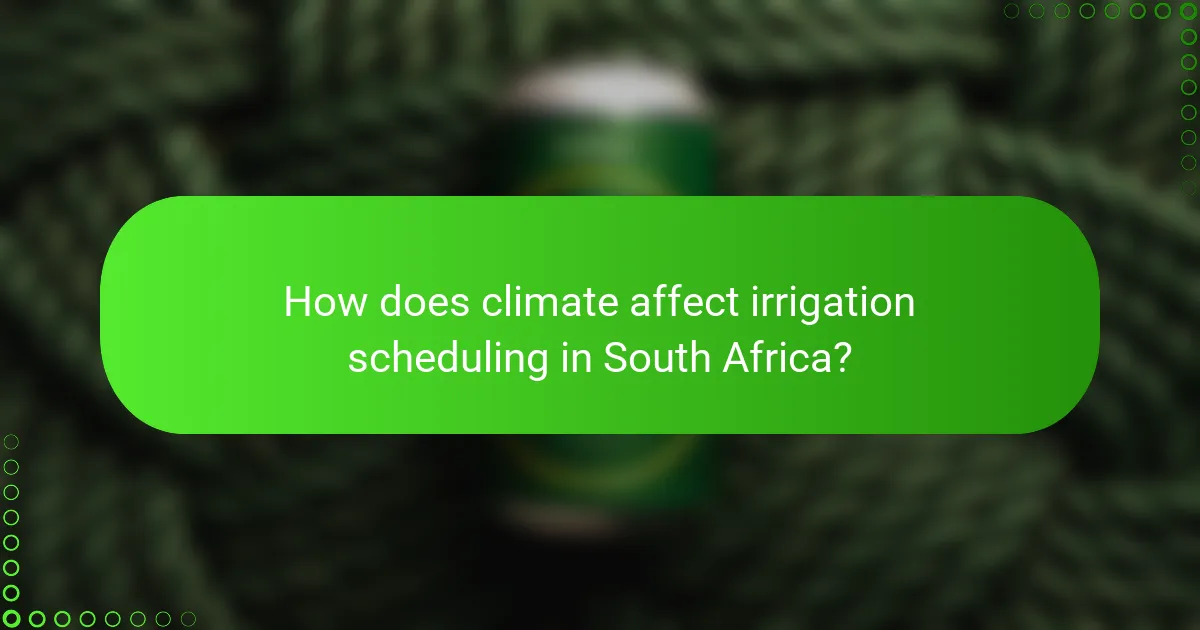
How does climate affect irrigation scheduling in South Africa?
Climate significantly influences irrigation scheduling in South Africa by determining water availability and crop water needs. Variations in temperature, humidity, and rainfall patterns dictate when and how much irrigation is necessary to optimize crop yields.
Seasonal rainfall patterns
South Africa experiences diverse seasonal rainfall patterns, which vary by region. Generally, the summer months from November to March receive the most precipitation, while winter months tend to be drier. Understanding these patterns is crucial for effective irrigation planning.
Farmers should monitor local rainfall forecasts and historical data to adjust their irrigation schedules accordingly. For instance, in areas with summer rainfall, irrigation may be reduced during peak rainfall periods, while in winter rainfall regions, more consistent irrigation may be necessary to support crops.
Utilizing rain gauges and soil moisture sensors can help farmers make informed decisions about irrigation timing and amounts. This data-driven approach can enhance water efficiency and reduce costs associated with over-irrigation.






